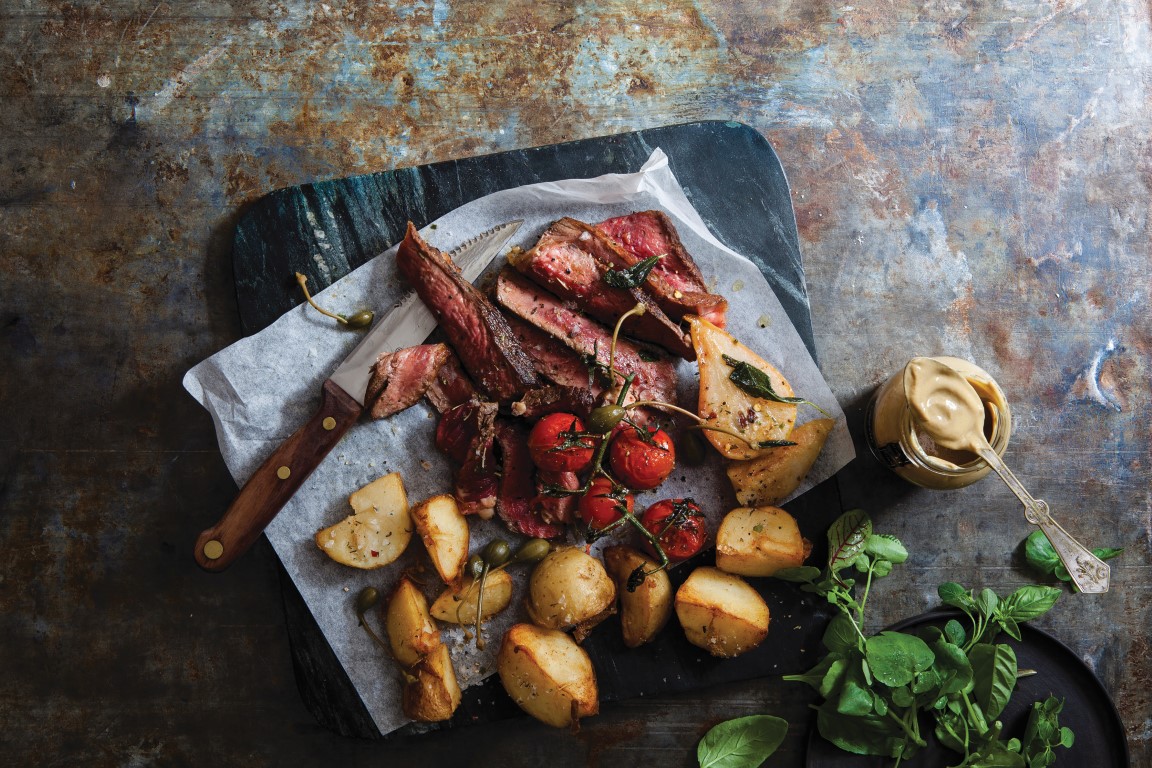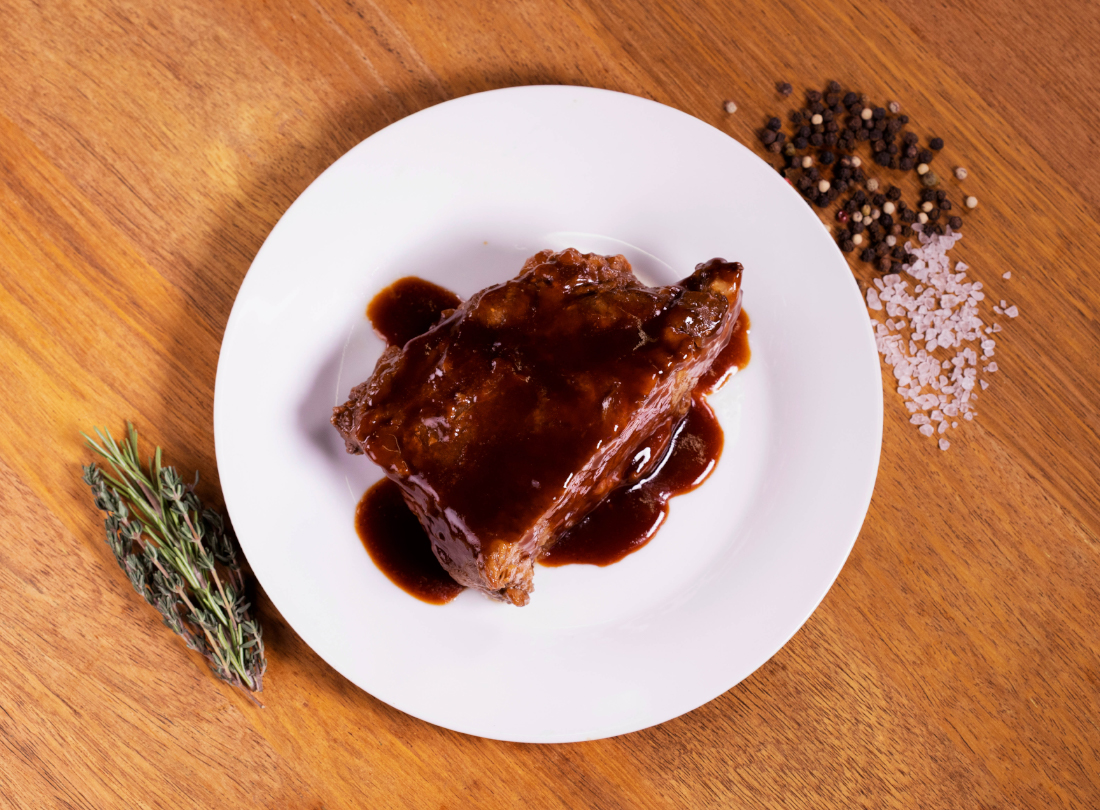

Different Australian beef cuts lend themselves to different styles of cooking, and an awareness of which cooking method is best for each cut is the key to enhancing the taste and tenderness of the meat.
After reading this quick guide, you’ll be ready to impress your friends with your beefy know-how. Great beef is, after all, the way to a person’s heart (well that’s our theory anyway).
Australian Beef Cuts for Slow Cooking (Including Slow Roasting, Braising and Stewing)

- Chuck: Chuck is tasty and economical. This cut should be cooked slowly at a low heat, as this breaks down the muscle fibres and increases the tenderness of the meat. Chuck steak or diced chuck is great for slow-cooking in casseroles.
- Short ribs: Short ribs taste best when slow-roasted, as this tenderises the meat and brings out their rich and meaty flavour.
- Round/Knuckle: The round is a working muscle (it runs length-ways down the leg and stops just above the knee) which means it can be quite tough. For the best outcome, round/knuckle should be cooked slowly in braises or casseroles.
- Brisket: This cut can be quite tough as it is the muscle that supports the weight of the cow (in general, the more work the muscles do, the tougher they will be to eat). Therefore, brisket requires slow cooking (in the oven or casserole type dishes) to break it down. Brisket can also quite fatty, so should be trimmed as desired before cooking.
- Shin: Beef shin AKA beef shank can be tough, due to the vast amount of connective tissue in the meat. As such, beef shin needs to be cooked ‘low and slow’ in order to tenderise the meat. Shin meat becomes fall-apart tender when sufficiently slow-cooked.
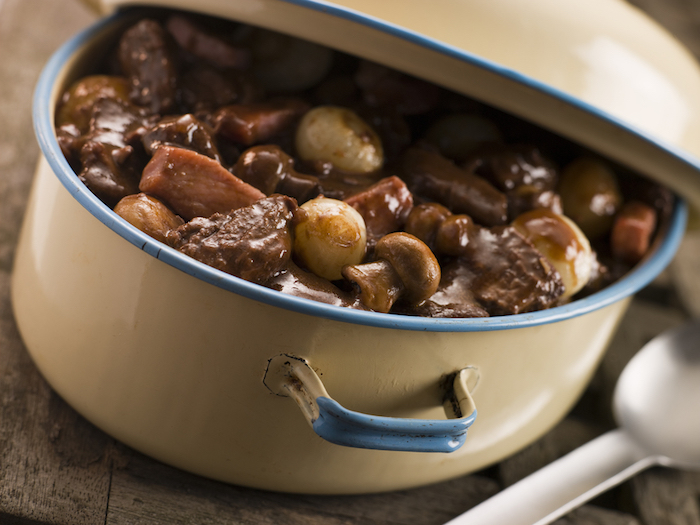

- Skirt Steak: Skirt steak has lots of delicious beefy flavour, but requires slow moist-heat cookery (such as braising) to become tender.
- Silverside: Silverside is commonly used for corned beef, but is also well suited to slow-cooking methods like roasting or braising.
- Rump: Rump is a versatile cut that can be either roasted or grilled. Rump is renowned for its rich flavour, but as the rump is a working muscle, it can be tough if cooked incorrectly. Rump roast tastes best when it is slowly oven-roasted or slow-cooked in casseroles or stews.
- Topside: Topside (which sits on the inside of the hindquarters and top of the leg) is extremely lean and makes for an excellent slow-cooked roast. It is also great for making healthy mince or thinly sliced schnitzels.
Australian Beef Cuts for Grilling, Pan-Frying and Stir-Frying
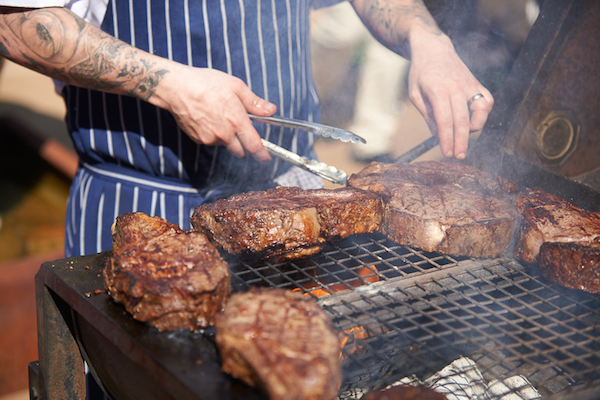

- Sirloin/Porterhouse/New York Steaks: These steaks are widely considered to be one the finest steaks on offer. They are nicely marbled and contain an outside layer of fat that can be trimmed or left on for increased succulence. These steaks are well suited to grilling or pan-frying.
- Fillet/tenderloin: The tenderloin is leaner than sirloin and has little external fat. Tenderloin is the most tender cut available (as you may have guessed from the name) and retains its tenderness even when cooked to well-done. Tenderloin is perfect for grilling and pan-frying and is best served medium to medium rare.
- T-Bone Steak: T-bone has fillet on one side and the t-shaped bone plus sirloin on the other. T-bone is well suited to pan-frying or grilling.
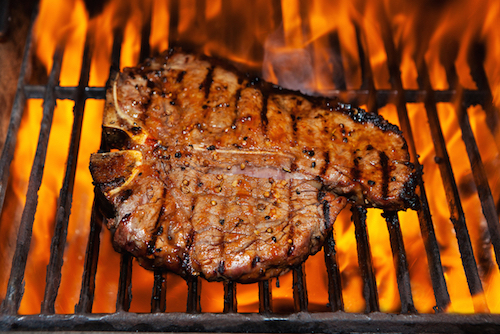

- Oyster Blade: Oyster Blade is one of the unsung hero cuts that is well suited to pan-frying and stir-frying. It is also a very popular menu item at Korean BBQ restaurants.
- Ribs: Beef ribs are typically purchased as a standing rib roast or rib eye on the bone. Bone-in rib eye steaks are great when grilled or pan-fried and the standing rib roast makes a perfect roast.
- Rib Eye: Rib Eye AKA scotch fillet (rib eye off the bone) is one of the most versatile, tasty and tender cuts of beef. It is well suited to grilling and pan-frying but also makes a delicious roast and a welcome addition to any stir-fry.
- Rump steak: A classic Rump steak tastes delicious when cut to approximately 2.5cm thick, coated with simple seasonings and then pan-fried or grilled to medium or medium rare.
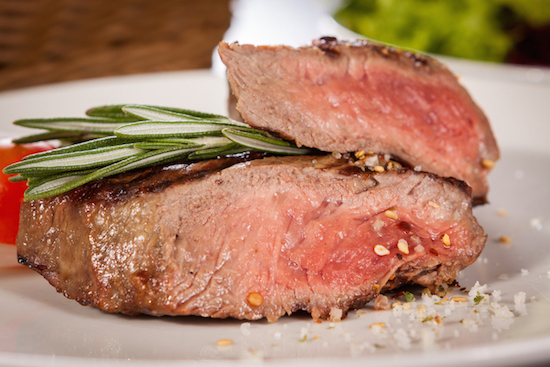

For more information about different Australian beef cuts and cooking methods, see the MLA’s ‘Beef and Lamb’ website.
If you would like to know more about our wide range of high-quality Australian beef cuts, see our beef brands. Get cooking!
 Return to News
Return to News




